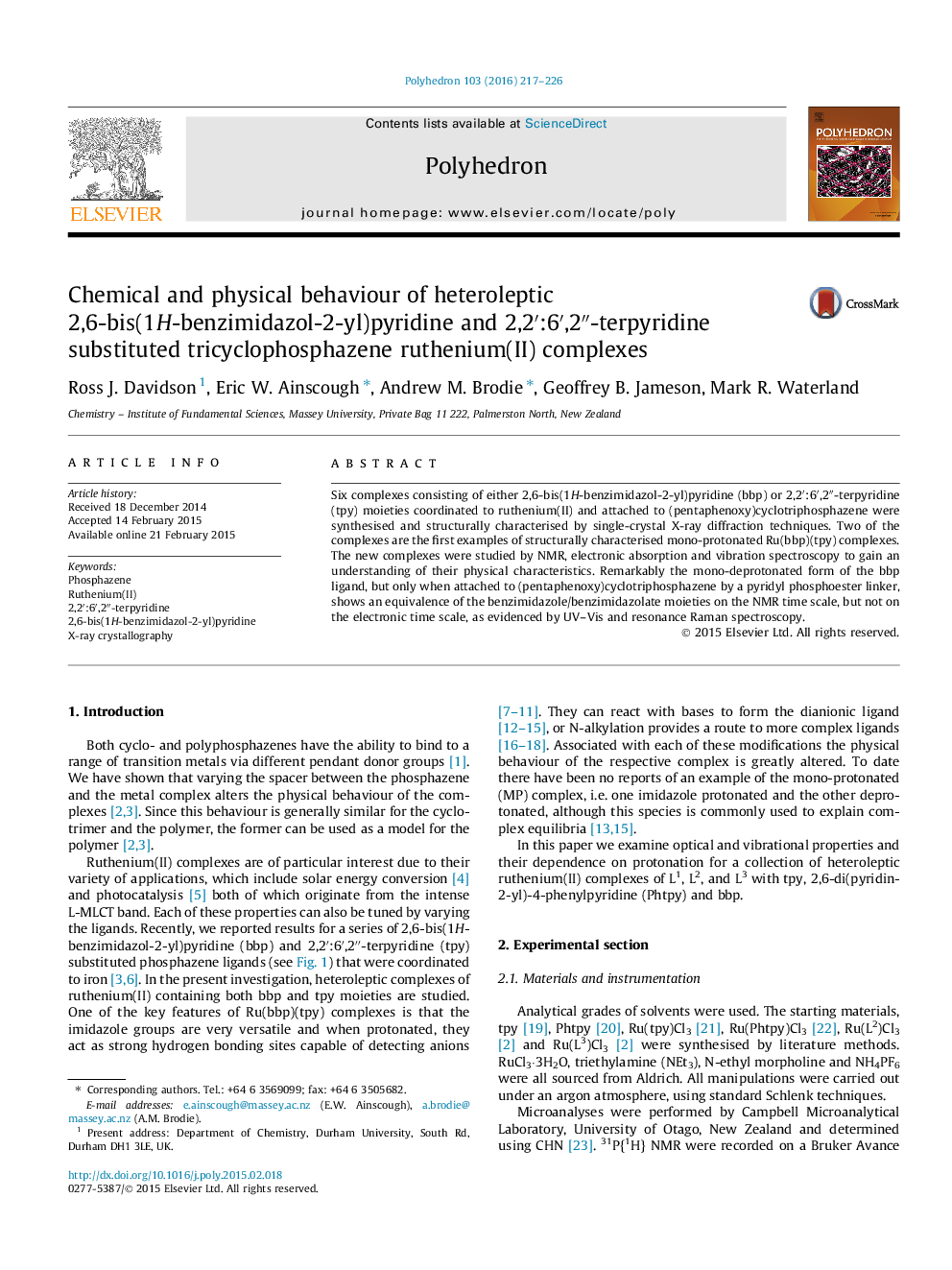| Article ID | Journal | Published Year | Pages | File Type |
|---|---|---|---|---|
| 1334318 | Polyhedron | 2016 | 10 Pages |
Six complexes consisting of either 2,6-bis(1H-benzimidazol-2-yl)pyridine (bbp) or 2,2′:6′,2″-terpyridine (tpy) moieties coordinated to ruthenium(II) and attached to (pentaphenoxy)cyclotriphosphazene were synthesised and structurally characterised by single-crystal X-ray diffraction techniques. Two of the complexes are the first examples of structurally characterised mono-protonated Ru(bbp)(tpy) complexes. The new complexes were studied by NMR, electronic absorption and vibration spectroscopy to gain an understanding of their physical characteristics. Remarkably the mono-deprotonated form of the bbp ligand, but only when attached to (pentaphenoxy)cyclotriphosphazene by a pyridyl phosphoester linker, shows an equivalence of the benzimidazole/benzimidazolate moieties on the NMR time scale, but not on the electronic time scale, as evidenced by UV–Vis and resonance Raman spectroscopy.
Graphical abstractNew complexes containing 2,6-bis(1H-benzimidazol-2-yl)pyridine or 2,2′:6′,2″-terpyridine moieties coordinated to ruthenium(II) and attached to (pentaphenoxy)cyclotriphosphazene have been synthesised. The complexes were studied by NMR, electronic absorption and vibrational spectroscopy. The sequential reaction of the fully protonated complexes with triethylamine has been examined.Figure optionsDownload full-size imageDownload as PowerPoint slide
